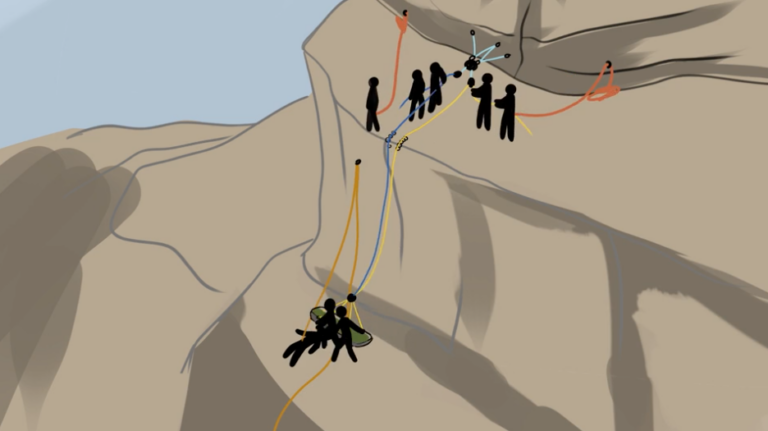Applying the Pareto Principle in Rope Rescue
The Applying the Pareto Principle in rope rescue offers a powerful strategy for optimizing rope rescue teams and systems. By focusing on the 20% of efforts that yield 80% of results, rescue teams can enhance efficiency, effectiveness, and responsiveness in emergencies.
This strategy revolves around two key dimensions:
- Identifying What Matters Most
- Optimizing Those Particular Elements
The principle encourages smarter decision-making, better resource allocation, and an iterative process for continuous improvement.
How to Apply the Pareto Principle
Focus on the 20%
- Analyze outcomes to identify high-impact tools, skills, or processes.
- Prioritize training, gear, and techniques that consistently produce desired results.
Iterative Optimization
- Use this strategy repeatedly over time to refine your systems and processes for maximum impact.
Areas to Consider: Technical Side of Rope Rescue
- Principles of Rigging
- Ensure foundational rigging techniques are applied consistently across the team.
- Anchors
- Optimize anchor strength, adaptability, and efficiency in various terrains.
- Fall Protection and Belay Operations
- Focus on effective slack management and belay efficiency.
- Patient Evacuation
- Streamline packaging and litter movement for smoother operations.
- Lowering Systems
- Minimize transition times and optimize descent control techniques.
- Mechanical Advantage Systems
- Standardize high-efficiency MA systems for optimal force output.
- Working in Suspension
- Train for safety and efficiency while suspended for extended periods.
- Horizontal Systems
- Optimize tensioning for stable and controlled horizontal rescues.
- Personal Skills
- Build individual competencies to ensure team versatility.
- Pick-Offs and Litter Work
- Focus on advanced techniques for dynamic rescues.
- Additional Training Considerations
- Identify gaps in team training and implement tailored programs.
Areas to Consider: Administrative Side of Rope Rescue
- Response Initiation
- Streamline activation protocols for faster response times.
- Support Structures
- Improve logistical and communication systems.
- Incident Action Plans
- Standardize and refine action plans for clarity and speed.
- Personal Protective Equipment (PPE)
- Ensure team compliance and full protection through standardized PPE usage.
- Technical Rescue Equipment
- Audit tools for efficiency, durability, and compatibility.
- Technical Skills
- Close skill gaps with focused training programs.
- Knowledge and Education
- Provide opportunities for continuous learning and growth.
- Leadership
- Develop strong leadership skills to improve communication and decision-making.
Combining the Pareto Principle with Opportunity Cost Analysis
Pairing the Pareto Principle with Opportunity Cost Analysis (OCA) helps prioritize initiatives for maximum ROI.
- Cost of Inaction: What happens if you don’t act?
- Cost of Action: What resources will this require, and what will it yield?
This dual approach ensures smarter decision-making and better resource utilization.
Building or Revising a Tech Team
When rebuilding or refining a tech team, consider these factors:
- Training
- Treat training as an investment. Focus on measurable outcomes and ROI.
- Gear
- Prioritize versatile and frequently used tools. Audit unused or redundant equipment.
- Employee Overhead and Expense
- Review staffing and labor costs for inefficiencies.
- Logistical Overhead
- Streamline transport, communications, and staging systems.
- Budget and Taxpayer Requirements
- Ensure all expenditures align with organizational goals and expectations.
- Vision, Planning, and Implementation
- Develop a clear mission statement with actionable plans.
- Determining Profit vs. Loss
- Assess whether investments (time, money, training) contribute to success.
Final Thoughts
Applying the Pareto Principle and Opportunity Cost Analysis empowers rope rescue teams to focus on high-impact areas. By prioritizing training, refining equipment usage, and optimizing team performance, you can achieve maximum results with minimal resources.
This strategy ensures smarter resource allocation, iterative improvement, and better decision-making—all essential for any high-stakes operation.
Peace on your days,
Lance
Explore More at Rigging Lab Academy:









